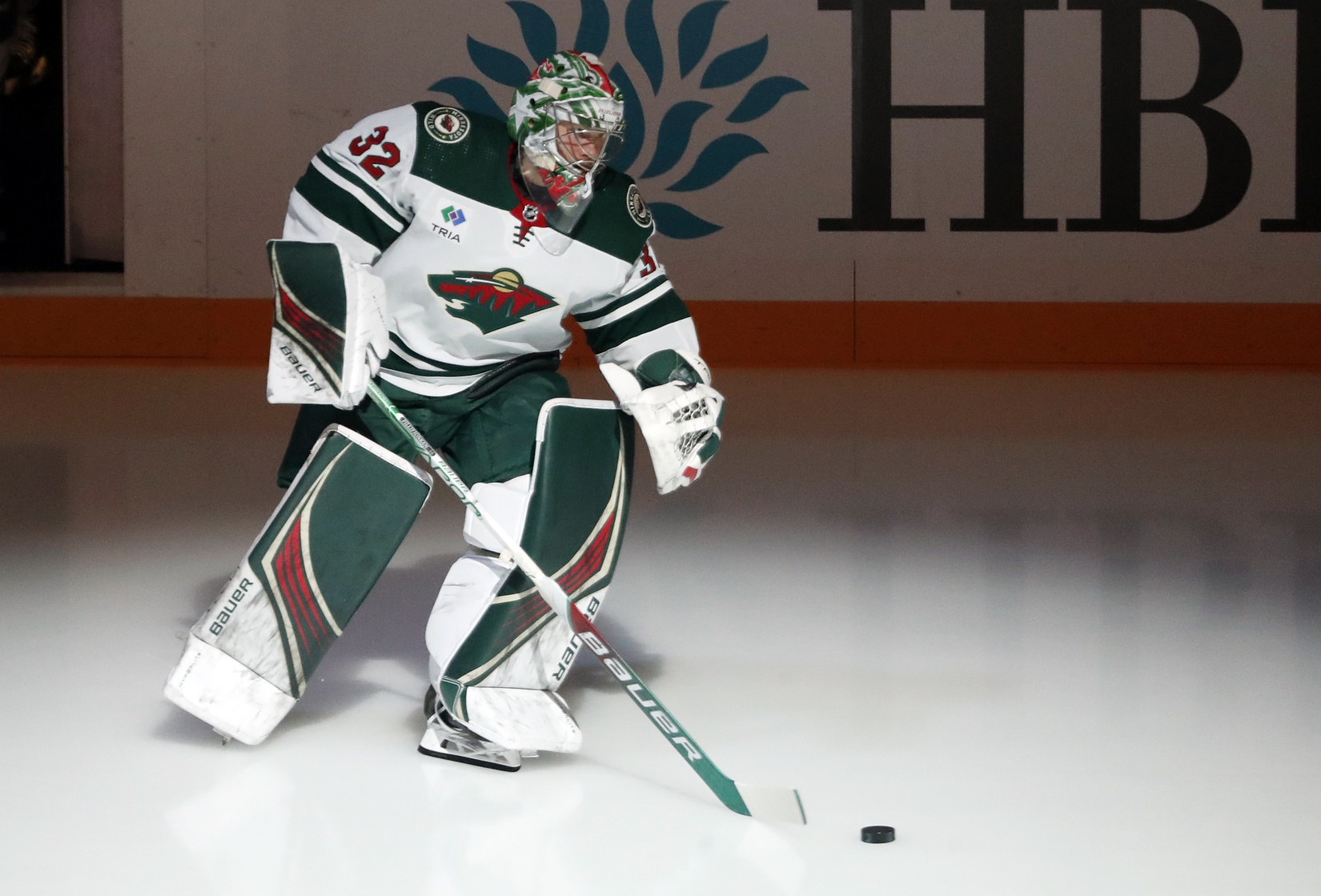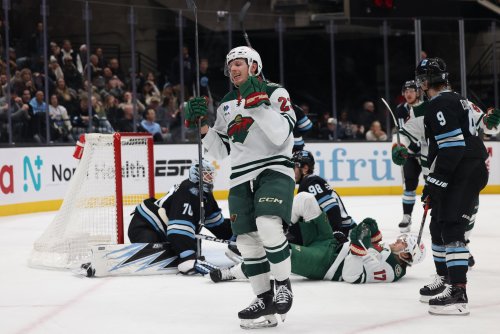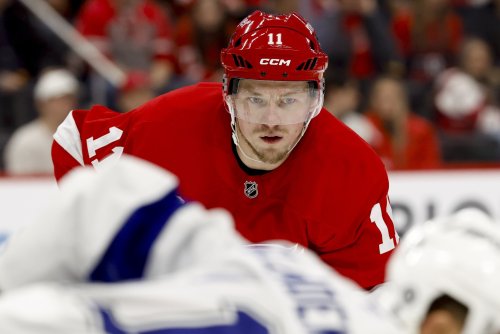
In most areas of his game, Filip Gustavsson has seemed like a new man from the moment the team plane touched down on Swedish soil. Perhaps the home cooking, familiar sights and sounds, or simply a little vacation got his mind in the right place. After all, a return home worked wonders for Joel Eriksson Ek’s game in 2016. Did a Swedish homecoming do the same for the Gus Bus?
After an excellent season opener against the Florida Panthers, Gustavsson performed below average according to MoneyPuck.com’s Goals Saved Above Expected (GSAx) metric. GSAx is designed to measure goaltender performance, adjusted for the difficulty of scoring chances. Gustavsson had his first game with a positive GSAx in Stockholm versus the Ottawa Senators.

It doesn’t take advanced stats to see that Gustavsson is playing his best hockey of the year. But if it did, we would have the numbers to prove it. At five-on-five, Gustavsson’s save percentage (sv%) jumped from 88.0% to 94.2%, and his goals-against per 60 minutes (a more reliable version of GAA) improved from 3.99 to 1.40.
To put that into context, let’s see where those would have ranked last year among the 65 goalies who played 7 or more games. His save percentage went from 64th to 5th, and his GAA jumped from dead last to 3rd.
It’s a fun storyline, but it doesn’t tell the whole story. Gustavsson returned to form in Sweden but allowed 6 goals on 5.5 expected goals in the two games after returning to America versus the Colorado Avalanche and Detroit Red Wings. Again, he was below average.
It’s dangerous to use numbers from a player’s best stretch of games and say that’s who he is now. At its worst, that’s just an exercise in bad-faith statistics. The only time that can be acceptable is when something changes, indicating a new situation. After a trip to Gustavsson’s homeland, are we really living in a different world?
The Wild parted ways with Dean Evason after the Detroit game. John Hynes joined the team and implemented a set breakout system that supports the puck carrier rather than spreads out across the ice. Hynes has designed his system to keep Minnesota’s players close to the puck in the event of a turnover. Defenders are better positioned to defend counter-attacks, so they give up fewer scoring chances and take fewer penalties. It also reduced the Wild’s five-on-five defensive zone giveaways by 15%.
Hynes also dialed back the aggression in the Wild’s penalty kill, further lightening the load on Minnesota’s goaltenders. They’ve rewarded him with excellent PK goaltending since then.
All of this translates to an easier workload for Gustavsson. In Gustavsson’s starts under Hynes, Minnesota has given up 20% less scoring quality compared to his starts under Evason, according to MoneyPuck’s five-on-five expected goals against per hour (5v5 xGA/60).
Gustavsson has produced incredible goaltending with a smaller workload. He’s allowing 57% fewer goals per hour, drastically out-pacing the reduced scoring opportunities. Under Evason, Gustavsson gave up 5.9 more goals than an average goaltender. Since Hynes took over, he’s given up 4.2 fewer goals than average.
That’s a difference of 10.1 goals. If you spot the early-season Wild an extra ten saves, how different would this season look? Of Gustavsson’s eight losses under Evason, half were one-goal games, and another was a two-goal loss.
But why would a reduced workload make Gustavsson better at saving? Expected goals allow us to largely isolate defending from goaltending and vice versa. In other words, why does better defense improve Gustavsson’s efficiency?
The answer lies in the type of scoring chances Hynes has eliminated from Minnesota’s defensive zone. The high danger chances appear to be the focus of Hynes’s defense. MoneyPuck defines these as scoring chances with more than .2 xG or a greater than 20% chance of becoming a goal. Since Hynes took over, Gustavsson has faced 39% fewer high-danger shots per minute of five-on-five play.
It’s not that Gustavsson isn’t good at making high-danger saves; he ranked seventh in the NHL last season in save percentage above expected on high-danger shots. But with fewer high-danger shots per game, Gustavsson doesn’t have to slide or dive all the way across the net to make high-danger saves.
That leads to much less fatigue in net -- both physically and mentally. He also doesn’t have to stress about constant defensive zone turnovers when his team starts to break out. His legs, eyes, and mind are fresher despite playing games without Jared Spurgeon and Jonas Brodin.
This ties into a broader conversation about Gustavsson’s endurance. The Athletic published a feature on the Swedish netminder this summer. It included Wild goaltending coach Freddy Chabot, who tipped his hand on the offseason training. “I told [Gustavsson] he has to continue to work on his game,” Chabot said, “and learn how to deal with heavier workloads and being able to do his thing every night.”
Perhaps that starter-level endurance takes more than one offseason to develop. Based on his improved performance behind Hynes’s structured teams compared to Evason’s run-and-gun system, Gustavsson seems to have a limit to his nightly workload. On the other hand, Minnesota is certainly leaning on Gustavsson for more starts this year. He’s on pace to play 52 regular season games.
That’s 13 more than last season, but he’s playing better now than when he was fresh early this season. If Gus maintains this strong play for the rest of the season and starts 50+ games, he’d be the presumptive starter in the playoffs and next season.
It’s easy to forget Gustavsson is only 25 years old and playing his second full NHL season. Some inconsistency is normal for a player that young and inexperienced. That makes the turnaround in his play all the more encouraging for his future, whether it was caused by the coaching change or a trip back home.
All data courtesy of MoneyPuck.com.
Think you could write a story like this? Hockey Wilderness wants you to develop your voice, find an audience, and we'll pay you to do it. Just fill out this form.







Recommended Comments
Join the conversation
You can post now and register later. If you have an account, sign in now to post with your account.
Note: Your post will require moderator approval before it will be visible.